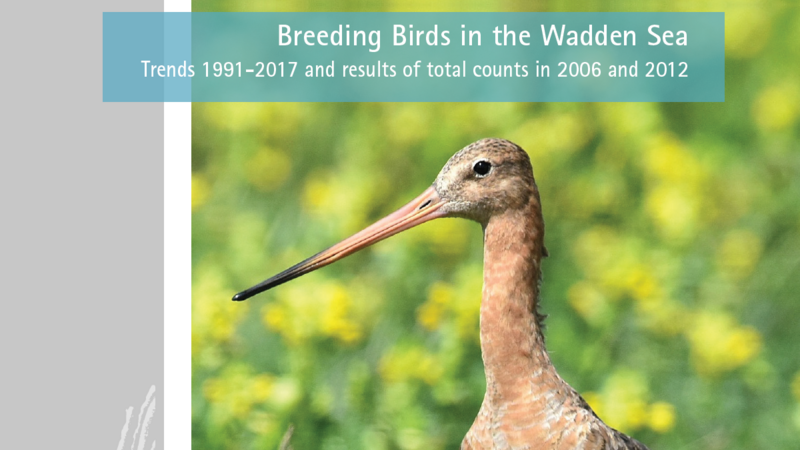New report on breeding birds in the Wadden Sea published

About 395,000 breeding pairs of coastal breeding birds occur in the transnational Wadden Sea, of which 75% inhabit the islands and Halligen. Overall 18 from 33 species (55%) have experienced decreases since the start of the monitoring scheme in 1991. Most decreases are reported from the western part of the Wadden Sea in the Netherlands and Lower Saxony, but the data also point at intriguing regional dynamics in breeding numbers. These are the main results of the recently published progress report ‘Breeding Birds in the Wadden Sea - Trends 1991-2017 and results of total counts in 2006 and 2012’. The report provides baseline information on trends in breeding numbers in the period 1991-2017 and an account on total counts in 2006 and 2012, all carried out in the framework of the Trilateral Assessement and Monitoring Programme (TMAP) of the Trilateral Wadden Sea Cooperation.
The report results largely confirm assessments made in the Quality Status Report 2017 and have also initiated various conservation actions all over the Wadden Sea. The long-term declines observed in many breeding birds have got much attention in the past few years, both at trilateral level (e.g. workshops on 'Breeding birds in Trouble’ and 'Predation Management’) and at national level. Results from international counts carried out in the framework of the Wadden Sea Flyway Initiative also suggest that for some species declines in overall population sizes are to some extent associated with drivers in the Wadden Sea.
In all countries, efforts are ongoing to improve conditions for breeding birds. This is e.g. expressed in a national breeding bird action plan (“Actieplan broedvogels Waddenzee”) and the Wadden Fund project “Wij en Wadvogels” in the Dutch Wadden Sea, LIFE-projects (Lower Saxony, Schleswig-Holstein, Denmark), concerted action to prevent high predation rates (Lower Saxony, Schleswig-Holstein, Denmark) and various local measures, including de-embankment of polder areas and rewetting or restauration of salt marshes (Netherlands, Lower Saxony, Hamburg) or measures targeted at specific species (e.g. protection of beach-breeding birds in all countries, species-protection measures for Gull-billed Tern in Schleswig-Holstein).
Yet, not all drivers for population declines are currently well-known (especially when it comes to impact of changes in food availability), urging the need for species-specific investigations (at least for key-species). Moreover, especially along the mainland coast, various pressures like predation or flooding risk may make proper success or failure evaluations of measures taken difficult, as they occur simultaneously or even interact.
